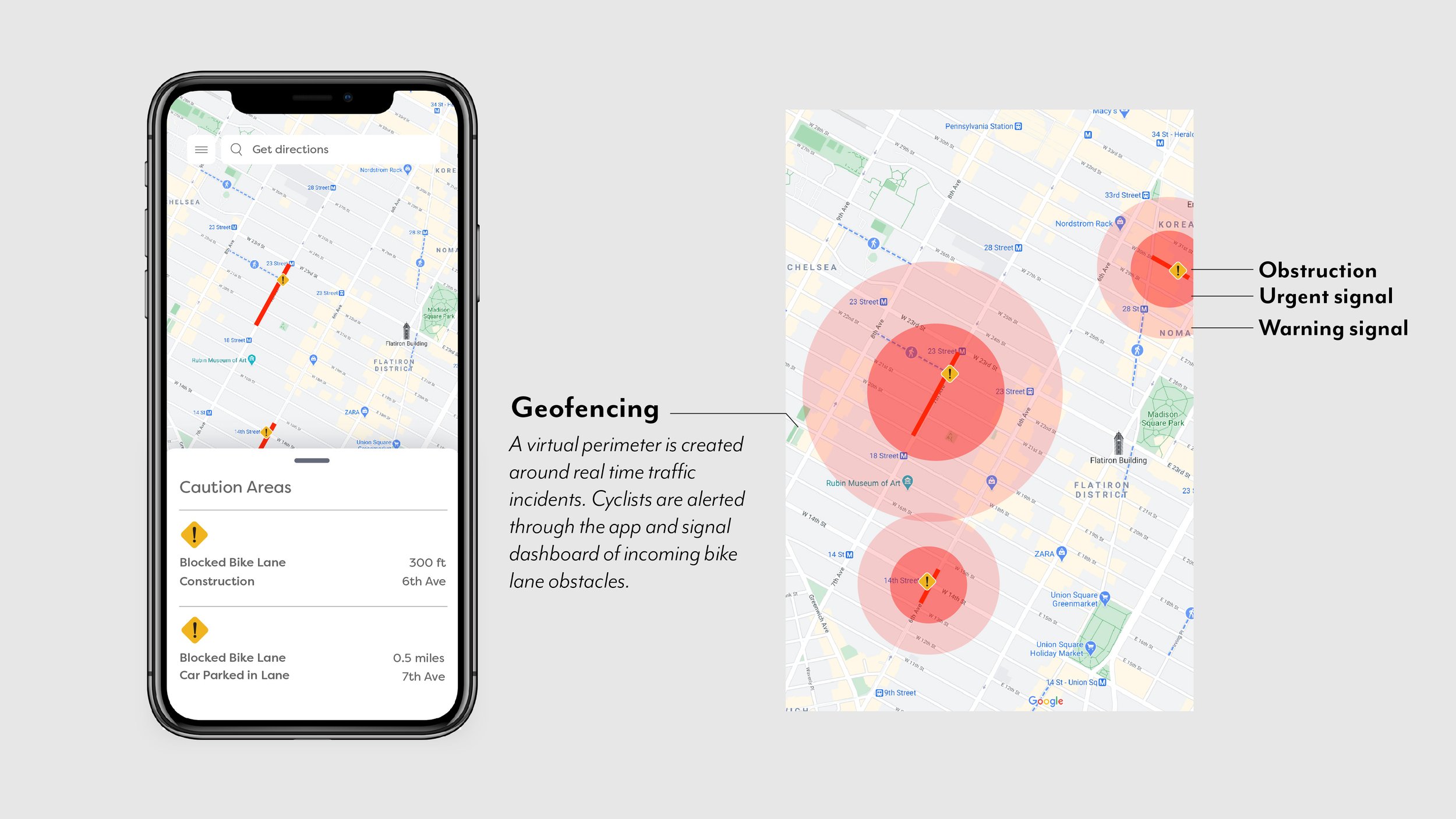Early Warning System for Cyclists
Visibike is a cyclist safety system for Citi Bike that aims to improve micro safety on urban streets. The devices are designed to be easily retrofitted to the existing bike infrastructure to warn cyclists of both oncoming hazards and objects approaching within their blind spots.
ROLE: UX Research, Product & UX Design and Logo & Branding
TOOLS: Photoshop, Illustrator, Figma, XD & 3D Printer
AWARDS: Master Thesis Award from Parsons School of Design
Trend
When Covid-19 hit New York City in early 2020, the Metropolitan Transportation Authority (MTA) saw a drastic decrease in ridership levels across all modes of mass transportation, including local and express buses, the subway and commuter rails. New hygiene laws, perceived health risks and the increasing number of people working from home sharply reduced the number of riders on transit, causing shutdowns throughout the MTA.
Citi Bike saw an increase in ridership levels. Between March 2019 and March 2020, they almost doubled to over 517,000 rides. With an increased demand for outdoor transportation during the pandemic, safety becomes a huge topic of conversation.
Problem
Statistics, published by the New York Police Department, show there was a 43% increase in cyclist injuries between March 9th and March 15th. This is after Mayor de Blasio had urged people to commute to work by bike and yet had not built enough protected bike lane infrastructure to handle the surge of new riders. Year to date, cyclists’ injuries are up by a further 13% compared to 2020. With these numbers still rising, I wanted to find out what the main factors were in cyclist injuries.
RESEARCH
I conducted primary, secondary and ethnographic research to help better understand the risks cyclists face when navigating congested urban areas.
THINK ALOUD RIDE ALONG PROTOCOL
WHAT: Cyclist speaks their emotions out loud during a bike ride, while I followed behind and took notes.
WHY: This information is used to capture in-context reactions from cyclists navigating urban areas.
END GOAL: Detailed information is gathered on the cyclists riding experience. Those positive and/or negative experiences highlight pain points and areas of opportunity for design.
STORYBOARD
The problem is that cyclists are required to travel in the bike lane as long as one is present. However, in many situations the bike lane can be blocked due to construction, illegally parked cars, loading zones and other hazards.
This means that the cyclists are required to leave the safety of the protected bike lane and share the road with regular traffic until they are able to get back into the bike lane. Cyclists aren’t always able to detect vehicles coming up behind them, to which they are subsequently side swiped. The cyclist and vehicle collide leading to cyclist injury or in some instances, death.
TECHNOLOGY
I began my research interested in the way that dolphins use echolocation to gather information about the area around them. After consulting with my expert advisors at Tesla, D-Ford and WORKZ, a telecommunications company, I began looking into and testing Bluetooth Low Energy Technology (BLE), proximity beacons and IoT.
This is where I became interested in the idea of invisible visibility in which the cyclist would be warned ahead of time of potential hazards to better prepare themselves and increase their visibility. I investigated retrofitted technology and warning systems, helmet accessories and Bluetooth wearables. The devices are designed to be easily retrofitted to the existing bike infrastructure to warn cyclist of both oncoming hazards and objects approaching within their blind spots.
PHONE APPLICATION
The system starts when the rider uses their phone to scan and unlock their bike through the citibike app. They are then able to map their desired route and see any potential hazards that they may encounter along the way. This allows riders to be better prepared for their ride in advance.
Riders are also able to easily report different types of bike related hazards they encounter along their ride. These alerts are posted in real time to warn fellow citibike users around them.
Low Fidelity Wireframes
High Fidelity Wireframes
Similar to the way the BLE technology that I tested works, the app uses geofencing technology to create a virtual perimeter around hazards in the area. These hazards are then relayed to the onboard cyclist dashboard as a way of warning the cyclist without them having to use their phone.
An orange light would begin blinking to indicate that the cyclist is approaching a hazardous area and to proceed with caution. The blinking would get progressively faster as the cyclist gets closer to the hazard. Once out of the hazard the light would then turn off to indicate a clear path ahead.
The rear depth sensor is in the rear light and can detect fast approaching vehicles from behind up to 20 ft away. The light and sensor are connected to the onboard dynamo led light system.
Information from the sensor is sent to the cyclist dashboard which can accurately inform the cyclist which direction the vehicle is approaching from and how close they are. Same as the depth sensor, the led light in the cyclist dashboard is also powered through the dynamo system.




















